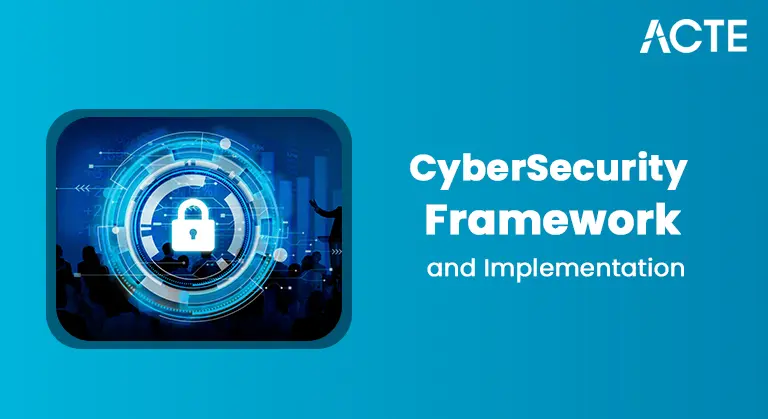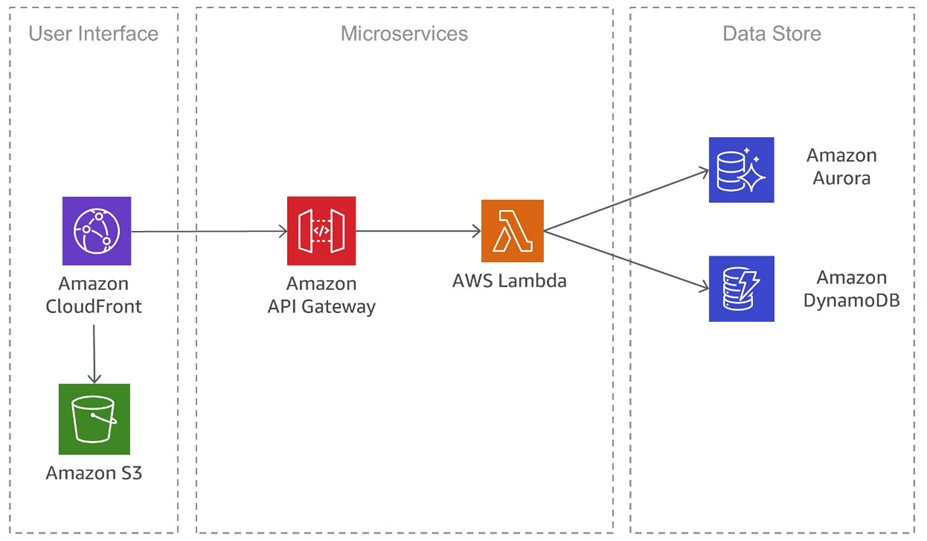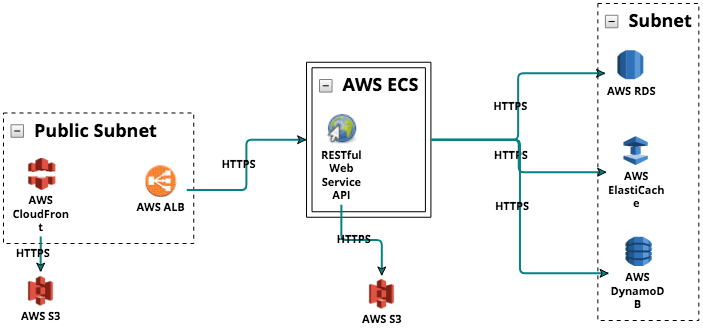
- Introduction to Microservices on AWS
- AWS Services for Microservices Architecture
- Building Microservices with AWS Lambda
- Containerization for Microservices in AWS
- Scaling Microservices in AWS
- Monitoring Microservices with AWS
- Security Considerations for Microservices on AWS
- Conclusion
Introduction to Microservices on AWS
Microservices architecture is a software design pattern where an application is developed as a collection of small, loosely coupled services. Each service is responsible for a specific functionality and communicates with other services via lightweight APIs. Microservices enable agility, flexibility, and scalability, as each service can be developed, deployed, and maintained independently. On AWS, microservices are often built using a combination of services and tools that help streamline deployment, manage scaling, handle communication, and ensure resilience. AWS provides powerful cloud-native services that make it easier to implement, manage, and scale microservices without worrying about infrastructure management. Amazon Web Service Training can help you gain the expertise needed to effectively utilize these services and optimize your microservices architecture.
Key characteristics of microservices:
- Loose Coupling: Services are independent of each other and can be developed, deployed, and scaled separately.
- Independent Deployment: Each service can be deployed and updated independently.
- Scalability: Microservices can scale independently based on traffic and demand.
- Resilience: Failures in one microservice do not affect the entire system.
AWS provides a comprehensive set of services that align well with microservices architecture, including compute resources, container orchestration, service discovery, and API management.
To Earn Your AWS Certification, Gain Insights From Leading AWS Experts And Advance Your Career With ACTE’s AWS Course Today!
AWS Services for Microservices Architecture
AWS offers a variety of services that support microservices development, deployment, and management:
- AWS Lambda: AWS Lambda is a serverless computing service that allows you to run microservices as functions without provisioning or managing servers. You can trigger Lambda functions in response to events from AWS services or HTTP requests through API Gateway.
- Amazon ECS (Elastic Container Service): ECS is a fully managed container orchestration service that supports Docker containers. It is ideal for deploying microservices packaged as containers, offering easy integration with other AWS services like load balancing, scaling, and monitoring.
- Amazon EKS (Elastic Kubernetes Service): EKS is a fully managed Kubernetes service that simplifies deploying and managing containerized applications. From Developer To AWS Cloud Specialist The AWS Certification Learning Paths can guide you through the necessary steps to gain expertise in managing EKS and other AWS services efficiently. Kubernetes is an open-source orchestration tool that provides advanced features like auto-scaling, load balancing, and self-healing for microservices.
- Amazon API Gateway: API Gateway is a fully managed service for creating and managing APIs that act as the entry point for your microservices. It supports RESTful APIs, and WebSocket APIs, and can integrate with Lambda, ECS, and other AWS services.
- Amazon SQS (Simple Queue Service) & SNS (Simple Notification Service):These services help decouple microservices by enabling asynchronous communication between services. SQS is a message queue service, while SNS is a pub/sub messaging service.
- AWS App Mesh: App Mesh provides a service mesh that facilitates communication between microservices, managing traffic routing, monitoring, and service discovery without the need for custom code.
- AWS Step Functions: AWS Step Functions is a serverless workflow service that allows you to coordinate multiple AWS services into business-critical applications. It is useful for managing complex workflows in microservices architectures.
Building Microservices with AWS Lambda
AWS Lambda is a key service for building microservices in a serverless architecture. It enables you to run code in response to events, without managing servers. Lambda functions are triggered by events from other AWS services, such as changes in an S3 bucket, an HTTP request via API Gateway, or messages in an SQS queue. This event-driven approach is ideal for microservices because each service can perform a specific task in response to a specific event. Each Lambda function is stateless, meaning it does not retain data between executions. This makes it easy to scale microservices independently. Lambda, one of the Top Important Cloud Computing Terms, can automatically scale the number of instances based on incoming requests, ensuring your services handle traffic spikes efficiently. Lambda integrates seamlessly with other AWS services like DynamoDB, S3, SNS, and SQS, allowing you to easily connect your microservices with data storage, messaging, and other cloud services. Lambda charges based on the number of requests and the duration of function execution. This makes it cost-effective, as you only pay for the compute resources you use, without needing to manage infrastructure. Additionally, AWS Lambda allows you to write code in multiple programming languages, such as Python, Node.js, Java, and Go, providing flexibility in choosing the best language for your microservices.

Lambda functions can be composed into more complex workflows using AWS Step Functions, further enhancing the capabilities of microservices architectures. As Lambda is fully managed, developers don’t need to worry about scaling infrastructure or handling maintenance, as AWS takes care of that automatically. The integration with AWS CloudWatch also enables you to monitor and log function performance, making it easy to troubleshoot and optimize. Overall, Lambda is a powerful tool for building efficient, cost-effective, and highly scalable microservices.
Interested in Obtaining Your AWS Certificate? View The AWS Course Offered By ACTE Right Now!
Containerization for Microservices in AWS
Containerization is a popular method for packaging microservices because it enables you to deploy, scale, and manage them independently. AWS provides several services to support containerized microservices:
- Amazon ECS (Elastic Container Service): ECS is a highly scalable container orchestration service for Docker containers. It helps you deploy microservices in containers and manage their lifecycle, scaling, and networking.
- Amazon EKS (Elastic Kubernetes Service): EKS provides a fully managed Kubernetes service, making it easier to deploy, scale, and manage containerized applications. Kubernetes is widely used in microservices architectures due to its powerful features like auto-scaling, load balancing, and service discovery.
- AWS Fargate: Fargate is a serverless computing engine for containers. With Fargate, you don’t need to manage the underlying infrastructure for containers, which helps address some of the What are the Issues in cloud computing, such as infrastructure management and scaling challenges.
- Amazon ECR (Elastic Container Registry): ECR is a fully managed Docker container registry that allows you to store, manage, and deploy container images. It integrates directly with ECS, EKS, and Fargate to simplify container workflows.
- Amazon Lightsail: For simpler containerized microservices, Lightsail offers an easy-to-use platform that includes containers, compute instances, networking, and storage, ideal for small to medium-sized applications.
- Amazon App Runner: App Runner is a fully managed service that simplifies deploying containerized applications directly from source code or a container registry. It abstracts much of the complexity of managing infrastructure and scaling, making it ideal for developers who want to focus on building applications rather than managing container orchestration.
- AWS Copilot: AWS Copilot is a CLI tool designed to help developers easily build, deploy, and manage containerized applications on ECS and Fargate. It simplifies the process of setting up environments, deploying services, and configuring load balancing, networking, and scaling, making it easier for teams to adopt containerized microservices.
Scaling Microservices in AWS
AWS offers several ways to scale microservices based on traffic and demand. Both ECS and EKS support auto-scaling based on demand. Using Amazon CloudWatch, you can monitor the metrics of your containers and automatically scale the number of container instances up or down. Lambda automatically scales the number of function instances in response to incoming requests, ensuring that your services can handle bursts of traffic without manual intervention. ELB distributes incoming traffic across multiple instances of your microservices, whether running on ECS, EKS, or Lambda, ensuring even distribution and fault tolerance. This service enables you to automatically scale resources for applications running on ECS, EKS, and other services, based on predefined rules or thresholds (e.g., CPU utilization or memory usage). To maximize the benefits of this service, AWS Training can provide the necessary skills to effectively configure and manage auto-scaling in cloud environments. For serverless microservices, AWS Lambda and API Gateway automatically scale with demand, ensuring that your application can handle varying loads without provisioning additional infrastructure. Additionally, AWS Application Auto Scaling provides further flexibility by enabling automatic scaling of a variety of AWS resources, such as DynamoDB tables, Aurora databases, and more. AWS Elastic Load Balancer (ELB) also works seamlessly with both ECS and EKS, offering robust routing and distribution of incoming traffic, ensuring high availability and reduced latency for users. For containerized services, AWS Fargate automatically adjusts compute resources, allowing applications to scale efficiently without requiring manual intervention or infrastructure management.
Are You Considering Pursuing a AWS Master’s Degree? Enroll For AWS Masters Course Today!
Monitoring Microservices with AWS
Monitoring is critical for understanding the health, performance, and operational status of microservices. AWS provides several tools for monitoring microservices:
- Amazon CloudWatch: CloudWatch collects and tracks metrics, logs, and events for AWS resources, including EC2 instances, Lambda functions, and containerized services. CloudWatch helps monitor CPU usage, memory, request rates, and error rates, providing real-time insights into the health of your microservices.
- AWS X-Ray:AWS X-Ray helps you analyze and debug microservices applications. It provides end-to-end tracing of requests as they travel through various microservices, helping you identify bottlenecks, errors, and latency issues.
- Amazon CloudTrail: CloudTrail records API calls made on AWS resources, which helps with auditing, security analysis, and troubleshooting, similar to some Fundamental Microsoft Cloud Services That Are In Demand, which focus on security, compliance, and resource management. You can track changes to your microservices’ infrastructure and configurations with CloudTrail.
- AWS CloudWatch Logs: CloudWatch Logs helps you monitor, store, and access log files from your microservices. By integrating log data with CloudWatch Metrics, you can set up alarms and take automated actions.
- Prometheus and Grafana: For containerized microservices, you can use Prometheus and Grafana to collect and visualize metrics in real-time. AWS offers integration with these open-source tools for container monitoring.
- AWS Managed Service for Prometheus and Grafana: AWS offers a fully managed service for Prometheus and Grafana, simplifying the setup and management of these tools for containerized environments. This service integrates seamlessly with AWS services like ECS, EKS, and Fargate, allowing you to monitor containerized microservices at scale with minimal overhead.
- Amazon Managed Grafana: Amazon Managed Grafana provides a fully managed environment to visualize and analyze metrics, logs, and traces. It integrates with various AWS data sources such as CloudWatch, X-Ray, and Prometheus, enabling you to gain deep insights into the performance and health of your microservices while improving operational visibility.
Security Considerations for Microservices on AWS
Securing microservices is crucial to maintaining the confidentiality, integrity, and availability of your applications. AWS offers several security features to protect microservices. Use IAM to define fine-grained access policies for microservices, ensuring that only authorized services or users can access sensitive resources. Use AWS API Gateway to secure your APIs by enabling authentication, authorization, and throttling. You can integrate API Gateway with AWS Cognito for user authentication and Lambda Authorizers for custom access control, enhancing the security and user management features, similar to how AWS Amazon Comprehend NLP Solutions can be integrated for natural language processing tasks. Network SecurityImplement VPC (Virtual Private Cloud) to isolate your microservices within secure network segments. Use Security Groups and Network ACLs to control inbound and outbound traffic to your microservices. Ensure that sensitive data is encrypted at rest (using AWS KMS for key management) and in transit (via TLS/SSL for communication between services).Protect your microservices from attacks such as DDoS and SQL injection using AWS Web Application Firewall (WAF) and AWS ShieldUse AWS Secrets Manager or AWS Systems Manager Parameter Store to securely manage and retrieve sensitive information such as API keys, database credentials, and certificates.

Additionally, AWS Identity and Access Management (IAM) roles can be used to enforce the principle of least privilege, ensuring that each microservice has access only to the specific resources it needs to function. AWS Shield Advanced offers enhanced protection against sophisticated DDoS attacks, providing automatic traffic detection and mitigation for your microservices. Furthermore, Amazon Macie can be used to automatically discover, classify, and protect sensitive data, helping ensure compliance with data privacy regulations while securing data used by your microservices.
Preparing for AWS Job Interviews? Have a Look at Our Blog on AWS Interview Questions & Answer To Ace Your Interview!
Conclusion
In summary, microservices on AWS offer a powerful, scalable, and flexible approach to application development and deployment. By leveraging AWS services such as Lambda, ECS, EKS, API Gateway, and others, developers can build, deploy, and manage microservices with ease, ensuring independent scaling, high availability, and resilience. Containerization and serverless architectures enhance the agility of microservices, while AWS tools like CloudWatch, X-Ray, and IAM help ensure robust monitoring, security, and governance. Security is paramount in microservices architectures, and AWS provides a rich suite of tools to protect data, manage access control, and mitigate threats. To fully leverage these tools, AWS Training can help ensure that teams are well-equipped to implement and maintain secure cloud environments. The ability to scale applications effortlessly and monitor their performance ensures microservices run efficiently under varying loads. With AWS, organizations can focus on innovation and development, leaving infrastructure management to AWS’s fully managed services. Overall, AWS enables organizations to adopt microservices architectures with the flexibility, scalability, and security necessary for modern cloud-native applications. Whether you’re building serverless functions, containerized services, or both, AWS provides the building blocks needed to architect and manage microservices effectively.





